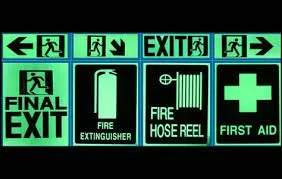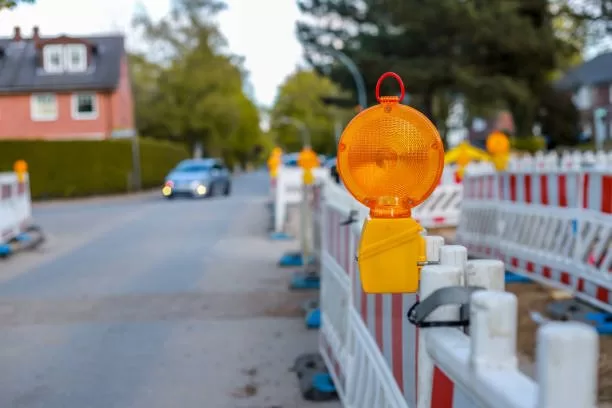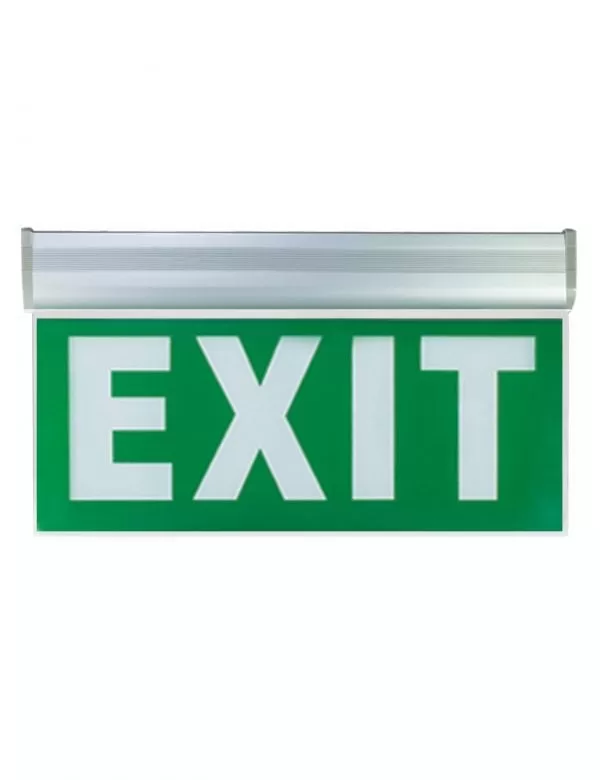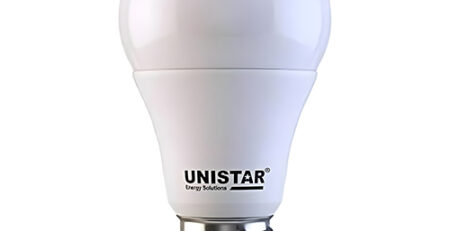Flashlights and emergency lighting
Flashlights and emergency lighting
 Flashlights and emergency lighting
Flashlights and emergency lighting
Emergency lighting legislation
The Regulatory Reform (Fire Safety) Order 2005 (RRFSO), which came into force in October 2006,
It is imposed on the responsible person
Which controls non-domestic buildings and common areas in a House on Multiple Places (HMO) The safety of everyone in the building whether they work, visit or live there.
This duty of care includes providing emergency lighting. Section 14(2)(h) of the RRFSO states:
“Emergency roads and exits that require lighting must be provided with emergency lighting of sufficient intensity in the event that normal lighting is disrupted.”
Emergency lighting is part of providing fire safety for a building and cannot be ignored:
As noted by the Industrial Committee for Emergency Lighting (ICEL)
, is the UK’s premier authority on emergency lighting and provides third party accreditation
For components and products for emergency lighting fixtures sponsored by the Lighting Industry Association (LIA):
“The legal requirement is that non-domestic premises must be secure at all times, even in the event of a mains power outage.
Therefore, almost all of these buildings must be equipped with emergency lighting.”
responsible person
The canopy standard for emergency lighting is BS 5266-1 (Code of Practice for Emergency Lighting)
. The British Standards Institute (BSi) guide to this code describes the duties of a “responsible person” As follows:
“The responsible person must be able to demonstrate that the hardware and maintenance of fire safety systems are adequate to protect occupants.
Fire protection products and related services must be fit for their purpose
and properly installed and maintained in accordance with the manufacturer’s instructions or the relevant British Standard.
(Guide to Emergency Lighting 2nd Edition, 2012, p. 211)
Although this duty of care can often be shared or delegated,
However, it remains a frightening prospect for ordinary people who have no knowledge of fire safety
They find themselves in a position of legal responsibility for the protection and well-being of others in this regard.
A responsible person can be anyone who has some control over a building or areas within it
, including, among others, facility management companies, landlords and lettings agents.
Emergency Lighting Systems: What’s Involved?
After a Fire Risk Assessment (FRA), which will raise the various issues that need to be addressed,
The procedure for emergency lighting will be as follows:
 System planning and design
System planning and design
Put on emergency lighting
(Wall/ceiling mounted lamps and signs)
Permanent installation of all fixtures
Periodic testing/maintenance of the system
Each building will have its own requirements regarding emergency escape lighting,
The role of which, as mentioned above, is to dispense with the provision of normal lighting in the event of a power or electrical circuit failure.
Of course, “normal” lighting levels will vary. These, even within an individual building.
Different areas inside will have different levels of natural lighting:
For example, rooms with external windows have the advantage of daylight,
While lighting should always be provided in unglazed interior areas such as corridors and stairs.
If the building is occupied at night, there should normally be provision for emergency lighting in all areas, including those that are naturally lit during the day.
One exception may be in the case of “borrowed” Of external street lights (turned on during building occupancy hours):
If this is a reliable source of lighting and reaches far enough into the building to illuminate escape routes, it can sometimes be considered sufficient, depending on who will be using it.
As noted by HM Government’s Fire Safety Risk Assessment: Large Assembly Places (May 2006, p. 28):
“Exceptionally, in parts of the building used by staff and where escape routes are simple and direct,
Borrowed lighting, for example from street lamps where escape routes are illuminated, may be acceptable.”
In other words, people who are familiar with the building may be able to evacuate safely in the hours of darkness by borrowed light;
However, it is never acceptable for members of the public to use escape routes that are only lit by these means.
Emergency lighting should always be provided in this case.
What is emergency lighting?
The BSi Emergency Lighting Manual referred to above explains:
“For the purposes of British and European Standard BS EN 1838, the term” “Emergency lighting” is the general term for equipment that provides lighting
In case of failure of normal lighting supply” (Page 1).
There are two main types of emergency lighting:
(1) Emergency escape lighting; (2)
Backup lighting (p. 2).
Emergency escape lighting is defined as “that part of
Emergency lighting provided to enable safe egress in the event of failure of the normal supply.
Backup lighting is defined as “that part of emergency lighting.”
Provided to enable normal activities to continue in the event of failure of the normal electrical supply.
The guide also makes this important distinction between emergency escape lighting and backup lighting:
While the former forms part of the fire protection of the building,
The latter will not (unless they meet the same equipment design and installation requirements as emergency lighting systems).
As such, from the point of view of providing fire safety, emergency escape lighting is an important type of emergency lighting,
It will be the focus for the rest of this article.
Emergency escape lighting
 There are three main aspects of emergency escape lighting:
There are three main aspects of emergency escape lighting:
1) Lighting the escape route
2)Open area/anti-panic area lighting
3)Illumination of a high-risk mission area.
Escape route lighting is part of the emergency lighting system provided to enable quick and safe evacuation of a building by illuminating escape routes
, such as corridors and stairs, as well as the location of fire-fighting equipment, for example.
Fire extinguishers and safety/security equipment such as key boxes that hold emergency keys to exit doors.
As such, lighting an escape route can be viewed as a basic requirement to provide safety
From fires in all non-domestic buildings and public areas of HMOs, regardless of use or occupancy levels.
Large public buildings such as shopping malls, museums, exhibition halls, etc., attract large numbers of visitors who would not be familiar with the building’s design.
Therefore, panic may arise in the event of an emergency evacuation by sounding the alarm.
Open area lighting/anti-panic lighting is relevant in such situations to help identify escape routes and exits and direct people towards them.
High-risk task lighting is a specific type of emergency lighting provided to ensure the safety of people involved in a potentially dangerous operation or situation.
It must be sufficient to enable the required lockdown procedures to be implemented.
This type of lighting will only be applied across a limited set of scenarios.
The above distinctions serve to emphasize the role of emergency escape lighting in fire safety and how it can be adapted and applied,
On a case-by-case basis, according to the specific use and occupancy levels of a particular building and/or areas within it.
Where is emergency escape lighting necessary?
In detail, as stated in HM Government publication Fire Safety Risk Assessment: Offices and Shops (p. 100),
An emergency lighting system should usually cover the following:
- Every exit door
- Escape routes
- Crossing paths
- Outside every final exit and on external escape routes
- Emergency escape signs
- Stairs so that each flight receives adequate light
- Changes in floor level
- Rooms without windows and toilets of more than 8 square metres
- Fire fighting equipment
- Fire alarm call points
- Equipment that must be shut down in an emergency
- Elevators
- Building areas larger than 60 m²
It is not necessary to provide individual lamps (luminaires) for each element above,
But there must be a sufficient overall level of light to allow it to be visible and usable.
 What are emergency lighting bulbs?
What are emergency lighting bulbs?
There are two main types of luminaires, the relevant standard being BS EN 60598-2-22: free-standing and centrally supplied.
A standalone lamp, as its name suggests, has all the basic components
(such as battery, charger, controller, lamp, diffuser and any test or monitoring facility) to even function as a standalone emergency light.
As stated in the Fire Protection Association (FPA) Emergency Lighting Guide (2012)
This is the most common form of emergency lighting and is usually designed to be mounted on a wall or ceiling to illuminate a specific area or building feature.
A typical example is a surface-mounted rectangular spacer lamp,
Although a wide range of freestanding luminaires are available including square, round, and recessed/inset models.
Centrally supplied luminaires, also known as “slaves” Since it cannot operate independently, by BS EN 60598-2-22 as follows:
“A luminaire of maintained or unmaintained operation which is energized from a central emergency power system other than that contained in the luminaire”.
Slave fixtures contain the lamp and some controls but the charger, battery and switching device are often located away and provide supply for a number of luminaires.
Again, the lamps themselves come in a range of shapes and styles. The FPA brochure contains,
Referenced above, a helpful table highlights the pros and cons of slave versus stand-alone luminaires (p. 21):
| Central power sources | Self-contained | ||
| Advantages | Disadvantages | Advantages | Disadvantages |
| Less expensive | Separate wiring | Ease / speed of installation | Limited lamp power |
| Long battery life if maintained | Regular battery maintenance | Flexible, extendibility | Operation limit to battery operation temperature |
| Few temperature effects | Loss when central system in fire | No battery room required | Shorter life batteries |
| Easier / automatic testing | Battery cabinet often required | No regular battery maintenance | Not suited to harsh or hazardous environments |
| Real time monitoring | Limited flexibility | No loss of total system | Cost of periodic testing greater |
Maintained, non-maintained, transferable emergency lighting
As stated in Her Majesty’s Government’s guidance on fire safety in offices and shops, referred to above:
“can” Maintenance of “emergency escape lighting, i.e. all the time, or” “No maintenance”, which only works when normal lighting is broken.
Systems or individual lighting units (luminaires) are designed to operate for periods between one and three hours after a main power outage.
In practice, the three-hour design is the most common and can help maintain
“On limited continued use of the premises during a power outage (other than an emergency)” (Page 100).
Maintained emergency lights usually have two lumen values (a measure of luminous flux, i.e. the flux of light, from a light source) in their technical description:
One output value when the light is powered by mains supply and another for output when the emergency light is powered by backup battery.
The latter is usually about 10 percent of the full output.
Maintained emergency lights are often available as convertible units.
This means that it can be switched between maintained and non-maintained operating modes using a regular wall-mounted light switch.
This is useful in areas that do not require constant lighting, for example stairs in a high-rise block of flats, where light is only required when someone takes the stairs rather than the elevator.
Emergency lights will, of course, remain on in the event of a power outage, even when the switch is in the “off” position.
However, as noted above, the emergency light output will be about 90 percent less than normal.
A disadvantage of unmaintained emergency lighting is that the condition of the lamp can only be verified through regular testing;
It’s not a good idea to wait for a power outage to discover it’s not working.
However, this problem can be overcome by installing self-testing emergency lights.
Maintained-free operation is usually preferred wherever possible, as it is cheaper in terms of energy consumption and life of the installation components.
However, in some buildings, such as theaters and cinemas, luminaires must always be on,
That is, it is in maintenance mode, so sometimes there is no choice in the matter.
Regarding emergency lighting maintained in areas that typically require high levels of lighting,
For example in the corridors of office buildings, a combined or sustainable emergency lighting unit can be installed.
This type of unit has two or more lamps, at least one of which is energized by emergency supply and the rest by electrical current.
The electrically powered portion of these lights can usually be controlled with regular light switches.
Normally all lights will be lit under normal conditions, but if the power fails, only the emergency light(s) will be on, battery powered.
 Luminous signs
Luminous signs
Emergency lights are also available as markers;
A typical example is the pictogram of a man running either through or toward an open doorway, with a directional arrow.
Others may also carry some text, for example ‘Fire Exit’.
These lighting units are available in both maintained and non-maintained versions in a range of styles,
From simple box type to “blade” design Elegant and slim body.
They can be wall or ceiling mounted or hung from high ceilings with decorative chains.
Illustrations and illustrations should not be mixed with text in the same building.
Another type of illuminated sign is the photochromic or “glow-in-the-dark” style. ,
Which again shows the man running with a directional arrow and an entrance, as well as the words “exit” Or “fire escape”.
These are available in three different sizes for wall mounting.
These are not luminaires as such, but serve to mark the fire escape route.
Please note
Self-illuminating signs and projector lights do not count toward emergency lighting requirements for buildings and still require a standard lighting fixture to be installed nearby as if they were regular plastic signs.
.

Road guidance equipment
Light marking tape, paint and flooring discs are also useful for low-level marking of escape routes
, especially when level changes in the building, for example stairs and uneven floors.
As stated in Her Majesty’s Government Guidance Reference above (p. 101):
“To complement emergency escape lighting, people can be helped,
Especially those who are not familiar with the buildings, have to determine exit routes through the use of route guidance equipment.
Wayfinding systems usually consist of light materials, LED strips or miniature incandescent strips of LEDs, which form a continuous escape route at the lower level.
These systems have proven particularly effective when people have to escape through smoke, and for visually impaired people.
They can be particularly useful in buildings where they can provide defined paths on floors and in multi-storey buildings they can direct people to rarely used escape routes.
 LED emergency lighting: the way forward?
LED emergency lighting: the way forward?
With increasing emphasis on environmental protection as well as energy and cost saving, LED (light emitting diode)
An increasingly popular choice of light source for emergency lighting.
In addition, the government is currently offering a financial incentive to switch to low-energy products:
The Enhanced Capital Allowance (ECA) scheme allows businesses to claim a 100% capital allowance for the first year on investments in certain energy saving equipment
, versus the taxable profits for the investment period.
LEDs do not contain mercury, have low power consumption, high efficiency and long life (typically 10 years)
This means that they are more environmentally sound than almost any other type of light source.
They come on instantly, unlike some energy-saving lamps, and the fact that they are much smaller, for example,
The traditional fluorescent tube means there is room for more elegant designs in emergency lights.
The latest models include three self-tests: a continuous battery test, a flashlight test, and a duration test.
Over the life of the product, this represents a significant reduction in maintenance costs.
Maintenance and testing of emergency exit lighting
Government guidance states (Fire safety risk assessment: offices and shops, p. 101)
However, all emergency escape lighting systems must be tested regularly and properly maintained to an appropriate standard
(i.e. BS 5266 – Code of Practice for Emergency Lighting in Buildings).
This test has traditionally been performed manually although emergency lights are available with a self-test facility,
As mentioned above.
Depending on the type of installation, trained personnel should be able to perform most routine tests themselves.
Due to different testing methods, there may be some uncertainty, in which case it is recommended to seek advice from the supplier or other competent person.
Typical testing is done by turning on a switch located either near the main fuse panel or next to the relevant light switches.
This is also known as the “secret key” Because it is designed to allow testing of emergency lights while preventing unauthorized operation of the test switch.
Testing usually includes:
Daily visual inspection of any central controls if a centrally powered system with dependent lighting units is installed;
Monthly functional testing by operating the test facility long enough to ensure each emergency light is illuminated; And
Annual full discharge test to ensure lights are on for the full discharge period (usually 3 hours) and batteries are recharged
Particular care should be taken after a full discharge test. Batteries usually take 24 hours to recharge
The building should not be reoccupied until the emergency lighting system is fully operational, unless alternative arrangements are made.
It is best practice to keep a record of all tests in a fire safety log.
Digital Addressable Lighting Interface (DALI)
At the forefront of emergency lighting technology is DALI – an international standard created specifically for digital lighting control.
It ensures the compatibility of products from different manufacturers and thus enables the combination of lighting solutions and different types of luminaires in a single installation.
The DALI addressable emergency lighting system also carries out all required scheduled testing to BS 5266
: Each lamp in the system reports its test results to the central panel or computer
If a fault is detected, the unique address of the lamp means that the source as well as the nature of the problem are immediately identified.
Up to 120 luminaires can be controlled and monitored by the DALI touch panel, and up to 10 of these panels can be connected
A maximum of 1200 emergency lights can be monitored, with minimal maintenance costs
.
LED headlamp prices in Egypt 2022
We are pleased that you visit our social media pages, where we publish exclusive offers on our website.
Our Facebook page Here.
Our Twitter account Here.
Emergency escape lighting
Emergency lighting















Leave a Reply
You must be logged in to post a comment.